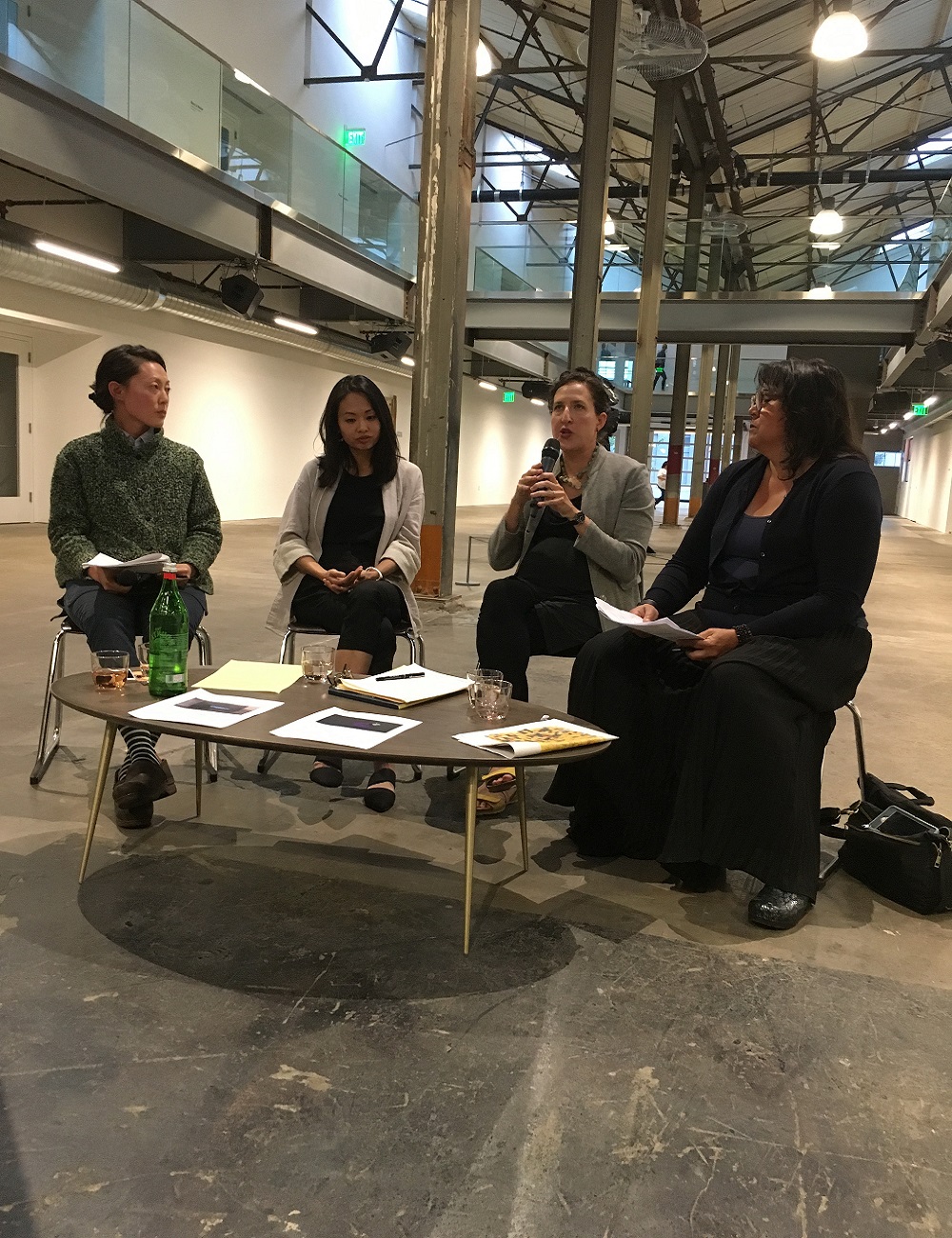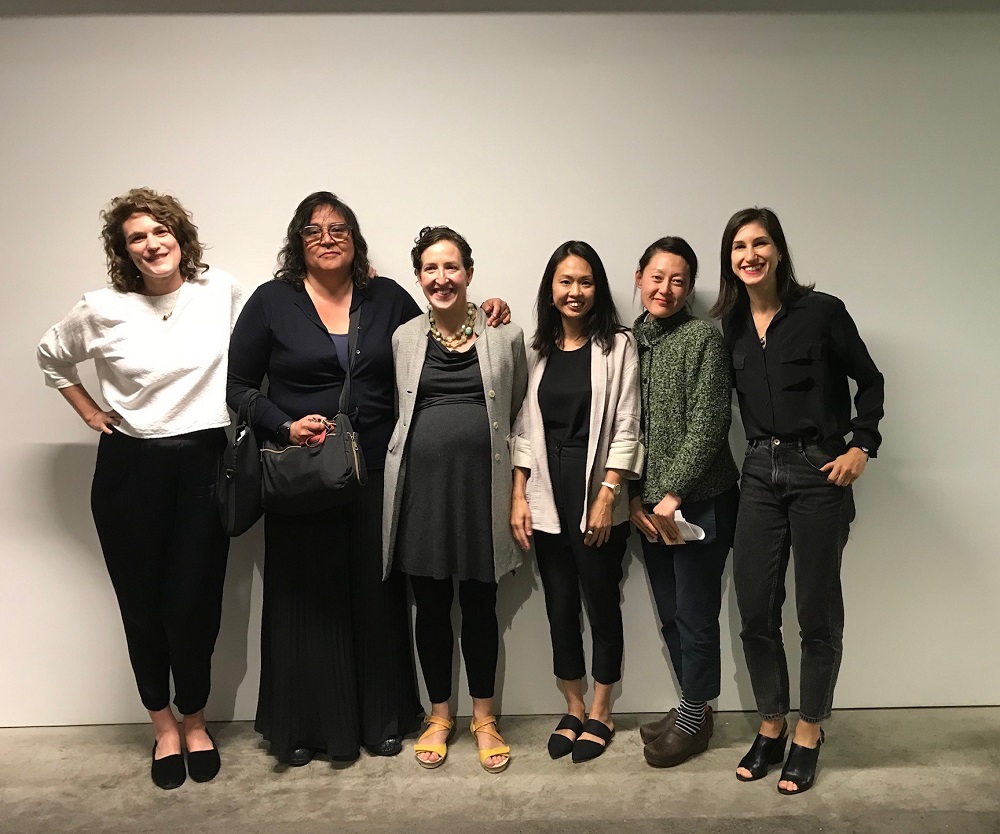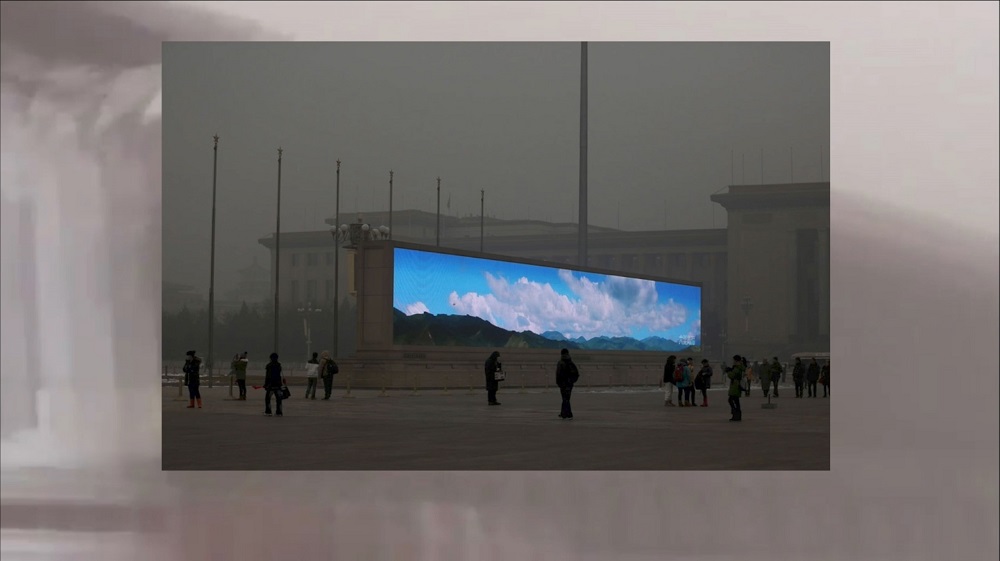
Zhou Tao The Worldly Cave [Fán Dòng] 2017, video still. Courtesy the artist and Vitamin Creative Space
Trace evidence, hénji zhèngjù
In English, trace has several meanings. A trace is made from contact, a mark left behind after an event. It means something happened. Trace can also mean not very much of something, as in “a trace amount.” Trace evidence is used by forensic scientists to reconstruct crime scenes. In Chinese, it was difficult to find a word that had all these implications. The Chinese word hénji means “trace” or “vestige,” as in a mark, or the vestige of a time past; but it does not connote vestige of a crime, nor does it suggest a quantitative effect—this “barely.” Evidence is a bit simpler: zhèngjù, often used like our evidence in legal settings.
With these translation questions in mind, on the eve of the Global Climate Action Summit, more than 130 people gathered at Minnesota Street Project in San Francisco for the public program “Global China: A Cross-Cultural Conversation on Art in the Anthropocene,” a complement to the exhibition Trace Evidence. The exhibition featured media works from three Chinese-born artists that explore human-made marks on the landscape—traces, such as sinkholes, thirty-story mudslides, and psychological subtleties—as proof of crimes against the planet. China is a country with more than 1.4 billion people—nearly one-fifth of the world’s population—many of whom are facing the lethal repercussions of rapid industrialization in recent decades. Reporting on China’s toxic air quality and garbage mountains permits Americans to see climate change as “over there,” not here in the United States. Yet, perhaps looking at “the other” allows us to more clearly see ourselves; think of the lead that flows in the water in Flint, Michigan, or the Deepwater Horizon oil spill in the Gulf of Mexico.
Trace Evidence presented videos by Zhou Tao, Mo Kong, and Connie Zheng. Each artist deals with the fact that climate change is perceptible but never understood in its entirety. Each of the works from the exhibition addresses climate change as a form of slow violence: the warming of the planet and its effects are slow processes, sometimes too slow to sense, but they are no less devastating than swifter attacks of destruction. Through different approaches, from abstraction to Internet culture and the manipulation of time, these works address climate change as everywhere and affecting everything—not completely knowable.
Zhou is an internationally acclaimed artist best known for his stunning video work. The Worldly Cave (Fán Dòng), 2017 depicts natural and industrial landscapes around the globe. Each scene is arranged through form, light, and color (especially eerie shades of purple), and the viewer is witness to surreal locations bearing distinct combinations of familiarity and strangeness; a sunset is followed by animals, industrial machinery, ruins of structures. We could be anywhere on earth, or not on earth. Mo explores China’s industrialization, globalization, and censorship. See Sun, and Think the Shadow, 2016 shows the disastrous impacts of China’s mining industry through a collage of images. The piece is quite a horror to behold, yet it is satisfying in the work it does to make destruction a talkable thing. Zheng treats drawings and texts as proposals for interdisciplinary inquiries in an effort to examine the compost pile of history via a bricolage of materials and signifiers. A certain kind of fluorescence, 2018 uses Zheng’s subject position as a Chinese American to examine and interrogate a US media-mediated reading of Chinese “toxicity” and pollution.
How can art be a platform for cross-cultural dialogue?

From left to right: moderator Nancy Lim, panelists Winnie Wong, Rachel Stern, Kim Anno. Image Credit: Rachelle Reichert
Panelists artist and activist Kim Anno, professor and author of Environmental Litigation in China: A Study in Political Ambivalence Rachel Stern, and art historian Winnie Wong were joined in conversation by moderator Nancy Lim, assistant curator of painting and sculpture, SFMOMA. This interdisciplinary conversation created opportunities to find connections between fields through the artworks on view. Anno started the conversation by explaining her relationship to the subject matter and elucidating the immeasurable scale of climate change—“the complete and utter change of the world as we know it. That continues to haunt me personally.” On Zhou’s The Worldly Cave, she spoke about how the artist utilized scale, the vastness of the landscape in comparison to humans, which appear incredibly small, showing “that human beings have always been at the center of nature, and nature falls around us.” Anno’s descriptions echo Timothy Morton’s attempts to tackle the vastness of climate change by coining the term hyperobject, an object so large it exceeds human comprehension. She described Zhou’s piece as harnessing beauty and abstraction, and she noted its relationship to Chinese painting and landscape. Abstraction, rising in popularity after the First and Second World Wars, has long been used as a tool for addressing issues that are seemingly too large to comprehend—namely, the devastation caused by the atomic bomb. Abstraction originally took form in the mediums of painting and sculpture, but here it engages video, usually a more representational medium. “In Zhou Tao’s work . . . the position of abstraction becomes a way to acknowledge the scope and scale of the problem,” Anno noted.
Wong went on to interrogate the medium in which these ideas were conveyed. Nature falls around us, perhaps; yet now it is no longer passively falling, but explicitly stating its presence. “I couldn’t help but feel uncomfortable with a very embodied problem [of climate change being portrayed in video] because when you face it, it affects your senses,” she said. One might imagine video as the best possible medium for expressing the dire issue of climate change, but Wong asked the audience to think deeper about how we experience video today and how the medium impacts and potentially dilutes our understanding. She addressed land art, a sixties movement exemplified by iconic works such as Robert Smithson’s Spiral Jetty, as a hypermasculine, destructive art practice whose legacy artists still grapple with today.
Stern found the works highly emotional and argued that emotions and politics are intertwined. She described Mo’s video as a “surrealist nightmare, disquieting.” Zheng’s Notes on Fluorescence, she said, “embodied the helplessness and sadness of a requiem.” And Zhou’s film she called “a beautiful dystopia.” Stern connected art practice to politics, especially in China, where “choosing to make a film about environmental issues . . . is in itself a political act.” She referenced Gene Smith and Takeshi Isikawa’s photographs in 1960s Japan, which played a huge role in raising public awareness about Minamata disease and the effects of chemical pollution, ultimately laying the groundwork for a series of major environmental lawsuits that led to the “Pollution Diet” of 1970, when Japan’s Liberal Democratic Party started to get serious about environmental issues. Artists have an important role to play in raising social consciousness, she argued. She went on to describe the current state of environmental activism in China, explaining that it “occupies an intermediate realm” between totally uncontroversial issues, like children’s rights or recycling, and forbidden ones, like Tiananmen, Taiwan, Tibet, Uighurs, and Xinxiang. The environment can be politically sensitive because it touches on political and economic elites, she noted, but artists, formally supported by the central government, can also address the environment as they tow the party line about preservation. Environmental activism in a country this big and this diverse is inevitably fragmented, she explained. While upper-middle-class urbanites and nongovernmental organizations might be effective on issues like recycling or the pollution of farmland, in the next province over, residents may be subscribing to folk beliefs that pollution is good for your health and that the more you can take, the tougher you are.
Where do artists fit? Are they prophets, saying the world will be destroyed tomorrow? Are they wizards, technologists, saying, “We can find answers, we can find solutions to problems we’re simultaneously creating”?
Anno, a tenured professor of painting at California College of the Arts since 1996, had a revelation when she saw a 2009 photograph of Mohammed Nasheed, then president of the Maldives, holding a cabinet meeting underwater to make a statement on rising sea levels. This moment inspired her to commit her work to environmental issues. While “art is not the answer,” she said, “it is a bridge.” Wong described the intense physical impact of smog while she was conducting research in Shenzhen. New to the experience, she first thought, “Now there will be political change, because air affects everyone.” But, she added, “Of course it didn’t.” Stern reflected on the difference between “chronic” and “crisis,” and the difficulty in mobilizing for a chronic event like climate change. She noted, “We’re trying to invoke the rhetoric of crisis to get us moving, and that’s still not enough.”
Ecological thinking calls for the decentering of man. It requires an expansiveness of thought, incorporating concepts from outside Western perspectives. Buddhism centers on the interconnectedness of all beings; Shintoism believes everything, even rocks, have spirits; and Taoism praises the “Three Treasures” of compassion, fragility, and humility. As such, it may seem like a natural leap to connect Chinese art with environmentalism, yet when one places environmentalism in China’s political framework, tension arises.
The media works at the heart of the discussion present a more complicated version of place, much like the issue of climate change itself. “I think what we learn from these three pieces is precisely the synchrony between Chinese and Western potential ways of looking at humans and nature,” said Wong. “What these three films can help us to challenge is definitions of those words: human, child, father, individual, nature, water, teeth, cow. When we see these presented as Chinese art, somehow this challenges us to expand our definitions of Chinese art, or what might be the boundaries.”
How do we create a shared sense of imaginative space about changing the future, surviving these contexts?
An audience member mused that art is a provocation, consciousness-raising; with climate change, the challenge is to expand the imaginative space about what can be done. Stern suggested that that space goes beyond China and the West, to a third, transnational space. “These films are interestingly transnational, breaking down that blame-shifting that prevents the conversation from moving forward. They have English and Chinese languages, music and images moving back and forth.”
There is no escaping the effects of climate change. Not long after the panel, in November 2018, the Bay Area would receive the ignominious designation of worst air quality in the world, the result of the devastating California forest fires in late November 2018. Locals got a firsthand taste of the effects of poor air quality, with many days of news reports citing conditions “worse than Beijing.” Mercifully, the Bay Area experience was relatively fleeting, not chronic, like Wong’s experience in Shenzhen. So, unfortunately, the sense of crisis required to spark mobilization did not last. Even after weeks of Bay Area residents breathing in the fumes of a literal Paradise lost, the rain came, Thanksgiving dinner was served, and life as we have always known it seemed to continue.
In these circumstances, an audience member pointed out, art is not a luxury but a tool for survival.

From left to right: Annie Malcolm, Kim Anno, Rachel Stern, Winnie Wong, Nancy Lim, Rachelle Reichert. Image Credit: Miguel Arzabe















